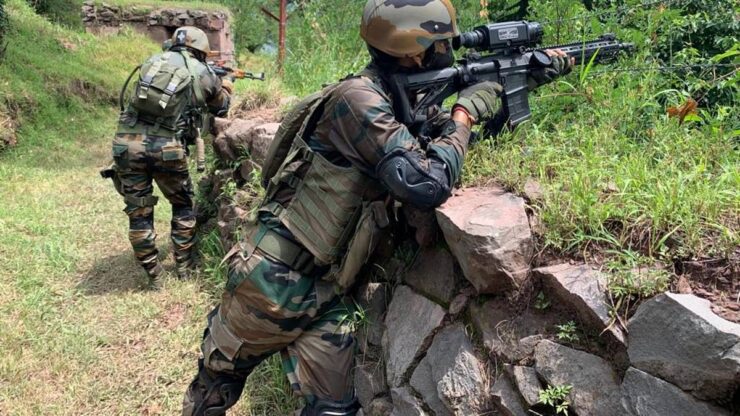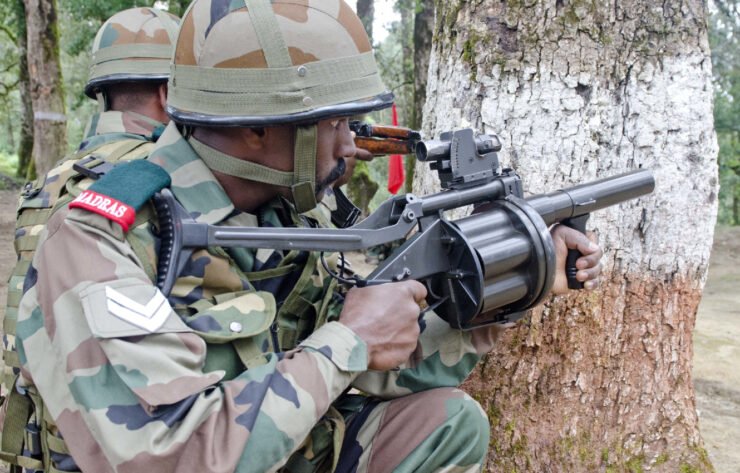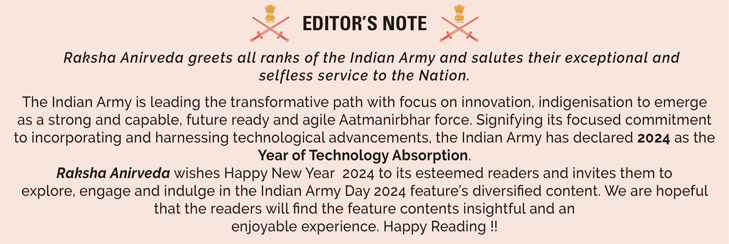
The rapid transformation in society, culture, technology and globalisation has altered the geopolitics and geo-economics canvas that has impacted warfare. While the traditional linkages between conflict, victory and politics remain, the mechanisms driving these have transformed and evolved with changing times.
The major changes in the goals-cum-goalposts of war, the rules of war, the players and the target of the war, have reshaped the character of contemporary conflicts. Technology and multi-domain warfare have further resulted in ‘Disruption in Military Affairs’.
Conflict no more has a start or an end and continues to manifest increasingly in the grey zone, with strategic coercion being the principal means. Overt physical aggression is giving more space to cognitive coercion to achieve political objectives.
The outcome of these modern conflicts is no more conducive to erstwhile clear-cut endings, thereby demanding end states to be achieved in a more nuanced way in these changing contexts. The spectrum of conflict in the 21st century thus demands the commitment of more diverse and smarter resources by creative and bold leadership. This requires the entire national security apparatus to review, redefine, reorient and reform in the spirit of the term called “Military Transformation”. There are no alternatives but to perform or perish nor is there time to ponder anymore.
As the New Year 2022 rolls in, the nation faces myriad threats to its territorial integrity and integral cohesion. Kautilya in his seminal treatise on statecraft identified four threats 2,000 years ago: the external threat externally abetted, the external threat internally abetted, the internal threat externally abetted and the internal threat internally abetted. Today we face them all in varying degrees.
On the military front, we face the challenges of terrorism, ongoing border turbulence on both fronts and the imperative to develop future capabilities. Each of these challenges is critical and cannot be put off. On the western front, we address the proxy war and terrorism with a strategy of paradoxical ‘periodically mowing the lawn’, while on the northern front, the present impasse of the strategy of exhaustion through denial against the Chinese strategy of coercion and information warfare, lacks both creativity and content.
The internal dissonance and threat to national cohesion is yet another critical facet but beyond the scope of this article. It is thus time to review our doctrinal approach to deterrence and war-fighting, and usher in force transformation for generating future capabilities, both with indigenous content.
Our doctrines of deterrence, war-fighting and future capability building are embedded in the legacy of the past and culture of the comfort zone of the present.
A multifaceted approach to deterrence and war-fighting requires capability, capacity and credibility to strategically communicate and dissuade aggression or deny coercion.
The challenge arising from this is to rethink how we define the notion of military victory in the 21st century warfare. It requires enhancing joint multi-domain offensive and defensive capabilities and addressing present voids and vulnerabilities like C5ISR, cyber and information warfare.

The need is to address both asymmetrical vulnerabilities and develop capabilities for the future, both in the kinetic and non-kinetic domain with embedded indigenous technology. Transformation lies at the heart of the approach to meet these challenges. Thus the urgency of transformation to meet future challenges, while maintaining near-term combat preparedness both in terms of readiness and effectiveness.
The need is to transform our military into a lean, agile, technology-enabled, networked and knowledge-based joint force, capable of conducting effective joint operations in a multi-domain environment. The aim is to deter, dissuade, deny and not yield any strategic advantage to our adversaries. Defence transformation must thus be the focus of our national security canvas for 2022.
As the nation transforms in all facets, so must the military and address three critical strategic components of military transformation—transformed politico-military culture, transformed defence planning process and transformed joint service capabilities through supportive budgetary allocation and matching indigenous reforms.
The start point for change is accepting the shortfall reality and indulging in a critical review to improve future capabilities. The key restraint remains the politico-military culture which is culturally un-uniformed and silo-ed, strategically lacks institutional envisioning and historically prepares for the last war, only to be strategically surprised repeatedly with capability deficit.
The culture has been reactive rather than proactive and preemptive with defensive ground-holding mindsets deeply engrained in leadership. The ultimate saviours have always been the brave junior leadership, but at a much avoidable cost to lives.
The acme of skill in warfare is however ‘victory at least cost and in minimum time’. Thus we must dispassionately recognize our deficits, bridge vulnerabilities and create future capabilities expeditiously.
A military transformation strategy in the Indian context must tackle: the “bigger the better” syndrome, the “silos of single service and joint force insecurity”, the absence of a “strategic culture” exemplified by the void of a national security strategy, the “ambiguous and often conflicting strategic communication”, “voids in indigenous defence industry” especially technology, the “budgetary reforms” to match policy initiatives, “indigenisation of doctrines” to evolve the shape, size and structure of future force and above all “deficits in strategic leadership and professional military education”.
There can be no pause but only reassess, reorient, reset and reform with a sense of urgency on a firm footing. It requires ruthless weeding out of bygone ideas, bringing in strategic creativity and directing institutional energy to usher in indigenous reforms. The need is for a primary shift in capability building approach from the present reactive “threat cum capability” to a proactive “capability-based” approach attuned to 21st-century warfare.
A capability-based approach focuses more on how to fight rather than solely whom and where to fight and thereby develops capabilities to deter and defeat adversaries in a joint multi-domain environment of the future. The threat plus thus gets addressed axiomatically. This must find the focus of the next CDS and the Department of Military Affairs.
To conclude, military transformation is a combination of concepts, capabilities, structures and human resources that shapes the changing character of conflict, yet aims to bring peace and stability for the growth of the nation. Thus at its core lies four imperatives—doctrine, technology, capability and human resource focus.
Transformation is dynamic, evolving and often controversial with its greatest challenge being “cultural mindsets”. It must facilitate a culture of change, creativity and innovation to maintain a competitive advantage in the information age.
Change must include the doctrines, budgeting, acquisition, structures and professional military education to encourage a series of transformations that in combination can produce a revolutionary increase in our military capability and redefine how future conflict will be fought.
All transformations may not necessarily succeed but no transformation is certainly a sure-shot formula for failure and defeat. We need to move on and address the challenges of changing times with focus and outcomes. It’s time that the national security decision-makers show greater resolve and urgency to usher in visible transformation and make 2022 a year of military transformation.
A pragmatic roadmap for military transformation with stipulated inviolable timelines and responsibilities must manifest as of the day before yesterday. This would also be a befitting tribute to India’s first CDS Gen Bipin Rawat.
-The author is a PVSM, AVSM, VSM has had an illustrious career spanning nearly four decades. A distinguished Armoured Corps officer, he has served in various prestigious staff and command appointments including Commander Independent Armoured Brigade, ADG PP, GOC Armoured Division and GOC Strike 1. The officer retired as DG Mechanised Forces in December 2017 during which he was the architect to initiate process for reintroduction of Light Tank and Chairman on the study on C5ISR for Indian Army. Subsequently he was Consultant MoD/OFB from 2018 to 2020. The Officer is a reputed defence analyst, a motivational speaker and prolific writer on matters of military, defence technology and national security. The views expressed are personal and do not necessarily carry the views of Raksha Anirveda.











